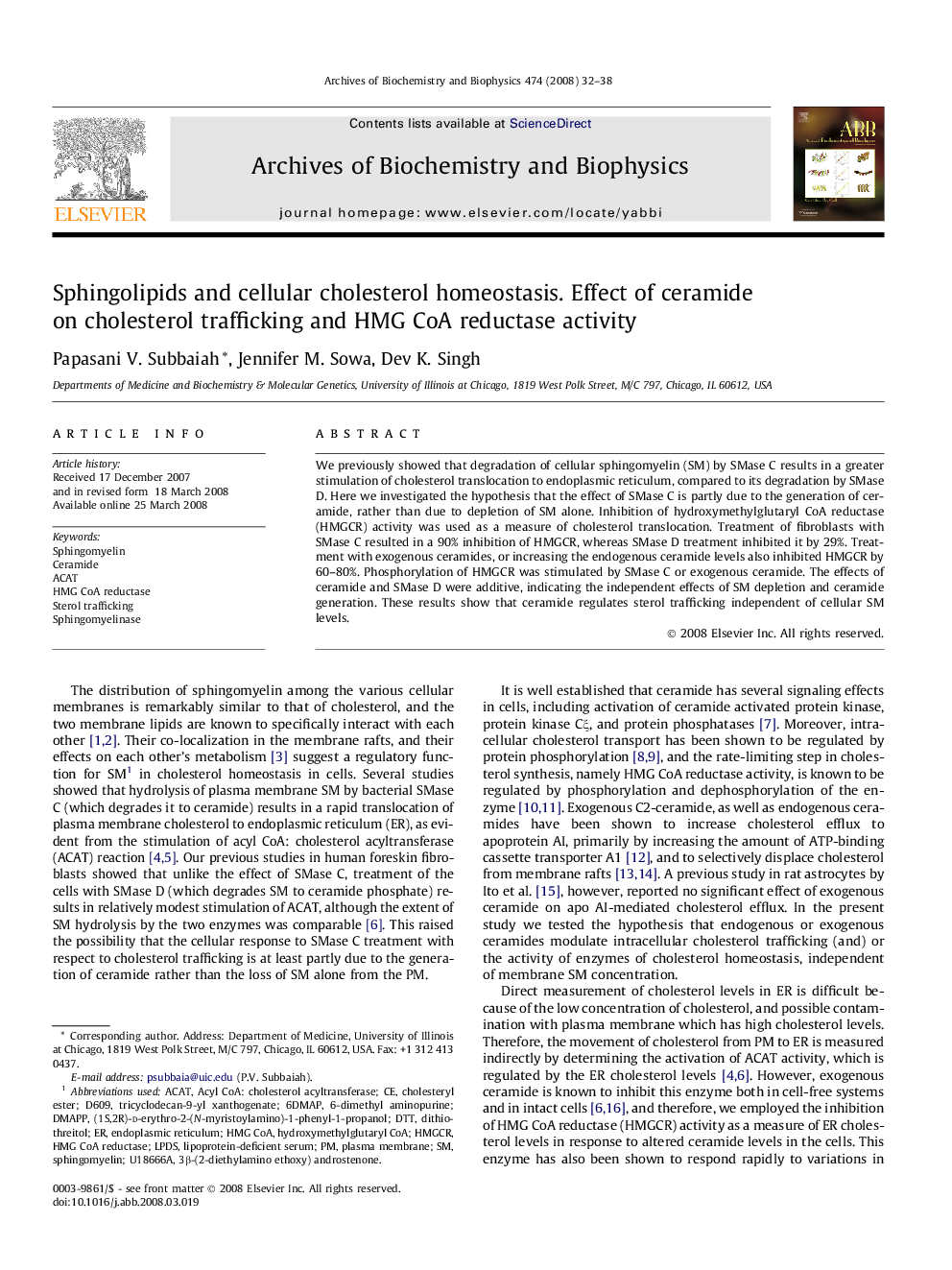| Article ID | Journal | Published Year | Pages | File Type |
|---|---|---|---|---|
| 8291973 | Archives of Biochemistry and Biophysics | 2008 | 7 Pages |
Abstract
We previously showed that degradation of cellular sphingomyelin (SM) by SMase C results in a greater stimulation of cholesterol translocation to endoplasmic reticulum, compared to its degradation by SMase D. Here we investigated the hypothesis that the effect of SMase C is partly due to the generation of ceramide, rather than due to depletion of SM alone. Inhibition of hydroxymethylglutaryl CoA reductase (HMGCR) activity was used as a measure of cholesterol translocation. Treatment of fibroblasts with SMase C resulted in a 90% inhibition of HMGCR, whereas SMase D treatment inhibited it by 29%. Treatment with exogenous ceramides, or increasing the endogenous ceramide levels also inhibited HMGCR by 60-80%. Phosphorylation of HMGCR was stimulated by SMase C or exogenous ceramide. The effects of ceramide and SMase D were additive, indicating the independent effects of SM depletion and ceramide generation. These results show that ceramide regulates sterol trafficking independent of cellular SM levels.
Related Topics
Life Sciences
Biochemistry, Genetics and Molecular Biology
Biochemistry
Authors
Papasani V. Subbaiah, Jennifer M. Sowa, Dev K. Singh,
